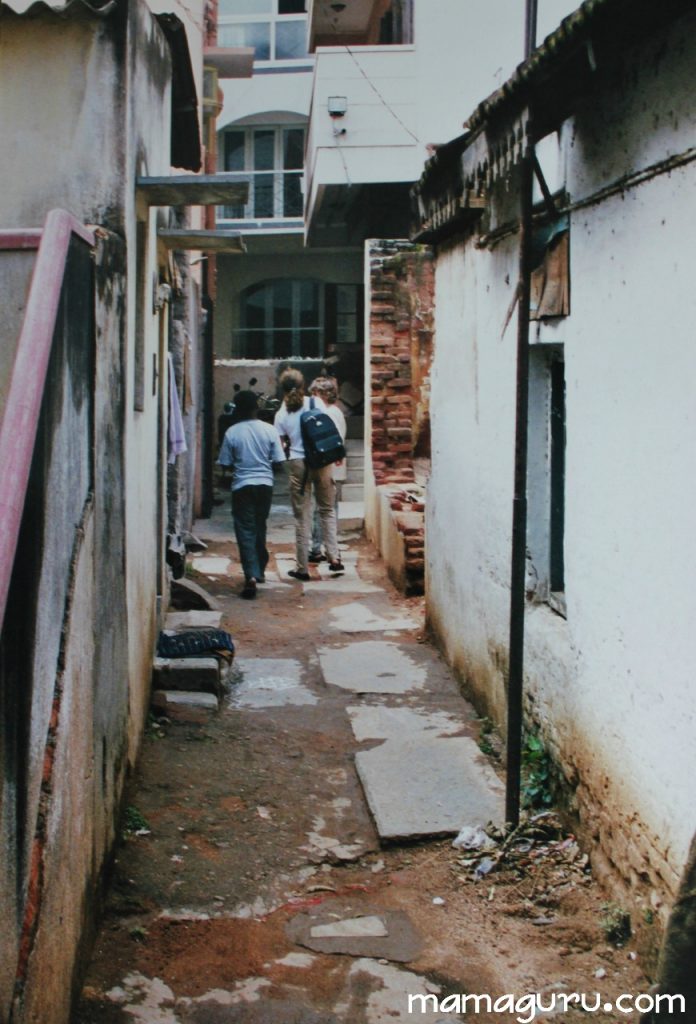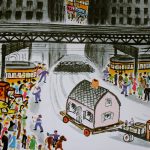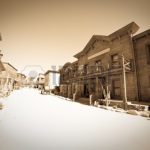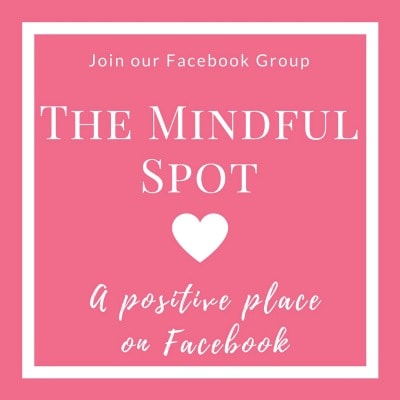Last December I made the dreaded trip to one of those big box stores I try to avoid. December is a particularly nasty month to go there, but we were out of detergent, toilet paper, and other necessities, so I stocked up and faced the traffic headed home.
What I saw on my drive home was absolutely spectacular and stunned the breath right out of me.
Before I tell you about it, let me set the scene.
I considered going back to take a photograph, but decided to dip into my writer’s pallet of words to paint my description instead.
I was driving on Okeechobee Road. Okeechobee is a six lane arterial that is sandwiched between a canal and an industrial area. The stretch I was driving goes on for several miles and connects the two biggest freeways in Miami, but it is heavily traveled for local reasons too. There is one dump truck for every five commuter cars. People fly down the street when they can, or trudge along miserably during rush hour. Nobody wants to be there and yet many of us end up there at the same time.
Okeechobee runs through the city of Hialeah, the fourth biggest city in Florida. It is the epicenter of Cuban life in Miami, not Little Havana, which is actually too little for the task. Many shops have signs in Spanish and many people only speak Spanish. They have relaxed zoning laws which means most front lawns are filled with cement, and the only plant life are weeds pushing their way through the cracks. The population ranges from modest income to fresh-off-the-boat poor, resulting in bargains galore. The people tend to be nice and family-orientated, but the city itself is ascetically ugly, particularly the section where I was driving which houses block after block of warehouses.
On the other side of the canal is Miami Springs, often called the Mayberry of Miami. This is where I live. We have a population of about 14,000 and steep property taxes which support lush landscaping, beautiful parks, and charming town festivals. We won the label Tree City USA. If you speed through our town, you will get a $300 ticket which will also support our landscaping, parks, and festivals. On the other hand, your kids can be sprayed down by a fire truck at the sweltering Fourth of July Parade every year. When I didn’t know the date of the town’s Christmas festival, I didn’t hesitate to email our mayor and he got back to me right away. The people here are a mix of Americans and Cubans, with many people inheriting their homes from their grandparents. Most residents choose to stay put and enjoy the small town friendliness that is lacking in greater Miami. We are also centrally located, 15 minutes to South Beach, downtown, the Design District, Wynwood, and Brickell.
Back to my drive.
You can easily see the differences between the two cities as you drive along Okeechobee. The Miami Springs side has been planted with a repeating pattern of dark green, light green, and gray trees whose fecundity spills into the canal creating a mirror image of life on water that stretches halfway across the canal. The shade they create is a ridiculous luxury in white hot Miami.
The Hialeah side has a few spindly bougaviallas which have no blossoms because they are never watered and they are forced to choke on the exhaust fumes of the busy street. It sears, unprotected, in the midday sun. In the summer heat ripples through the air and it looks too hot to breathe, like your lungs would scorch if you rolled down your window. If you turn your head away from the canal into Hialeah, you will see smokestacks, a water treatment facility, warehouse shopping, and “love” motels with grand fountains beckoning illicit affairs.
This is what I saw that day:
Sunlight.
As I hassled through the congested traffic, my eye caught the light shimmering off of the canal. Here I must resort to the clichéd language associated with natural beauty: the sunlight danced off the ripples, it had a life of its own, it bounced endlessly. If you have ever seen bright morning light find its glory on the ever-moving surface of water, you know just how awe-inspiring it was.
I had just come from the big box store and a frustrating traffic jam. My slumped shoulders and furrowed brow displayed my weariness from my errand. Usually it is a pretty ugly drive home until I can cross the canal, but that day I just couldn’t keep my eyes off the water.
I glanced around, as one does when witnessing an amazing spectacle, trying to catch the eye of another onlooker to share the moment. Everyone was driving and paying attention to the road, consumed by the moment, but also missing it. When I looked to the left, I saw the factories, fast food joints, dirty motels. I couldn’t bear it. I turned my head to the right to see if the sun was still performing magic tricks on the water. It was. I had to peer over dead twiggy bushes to see it, but there it was: just shining.
It struck me how much of our happiness is created simply by where we choose to place our gaze.
Do we see what is beautiful in the world or what is ugly? In my style of yoga, Ashtanga, the gaze is an essential part of every single posture. You might not be able to touch your toes, but you can train yourself to gaze at your navel. What an underrated skill that is, to know where to place your gaze.
I thought back to when I lived in India. One day my friends and I made a trek to a bookstore to pick up fresh copies of the Bhagavad Gita. We had to cross through a narrow alley lined with rubbish to get to the store in the back. I never would have found the shop without help. My 74 year old housemate, a botanist from Argentina, chastised me for lagging behind.
“Stop taking so many pictures of garbage, Rebecca,” she chided. “This is a beautiful country, but all you do is take pictures of the garbage.”
It’s true. I took a lot of pictures of garbage in India.
But… garbage is everywhere in India. If you don’t want to take a picture of it, don’t bring your camera. I don’t think India produces more garbage than the West; they just have less infrastructure to hide it.
What my friend didn’t know was that I was taking a picture of a tree growing out of the garbage. To me that was such a transcendent sight, to see life triumph and shoot its way out of the earth no matter how much garbage we topple in its path towards the sunlight.
Beauty is in the eye of the beholder.
We’ve all heard that quote from Margaret Wolfe Hungerford. It means more than just that different people find different things beautiful. It is a challenge to seek the sight of beauty. After all, we own our eyes. More importantly, we control our eyes. Sight is our most used and relied upon sense, 60% of our sensory input comes from sight alone. How we see the world shapes our perceptions of reality in profound ways.
On my drive I could choose between right or left, nature or pollution. In India, I could see the pile of garbage or the tree growing out of it.
Here’s another quote I love. I have carried it in my heart since college, but can’t properly credit it:
What we see, we believe.
And seeing is changing.
That sunlight I saw moved my soul straight out of the mundane and into the sublime. The ordinary became the extraordinary. Nothing really changed in my day, except my entire perception of it. The beauty that always surrounds me was quickened by that sight, my love for life rose to surface after being suppressed by shopping and driving. It seemed marvelous to be alive in the world as I carried my 48-pack of toilet paper into the house.
Seeing changed my day. Seeing changed me.
Where do you choose to place your gaze today? What beauty will your eyes behold?
Be. Hold.









Leave a Reply